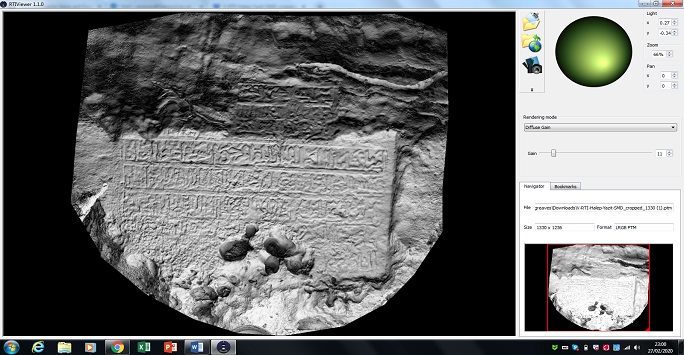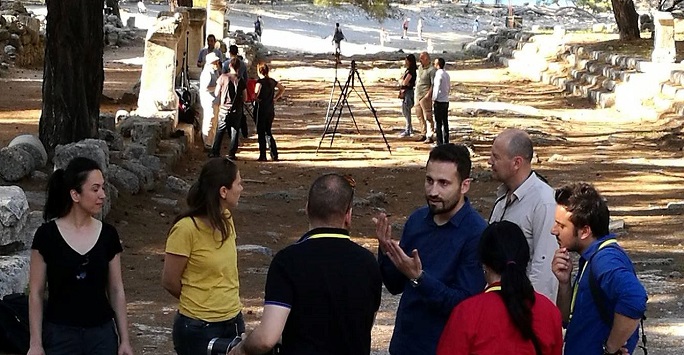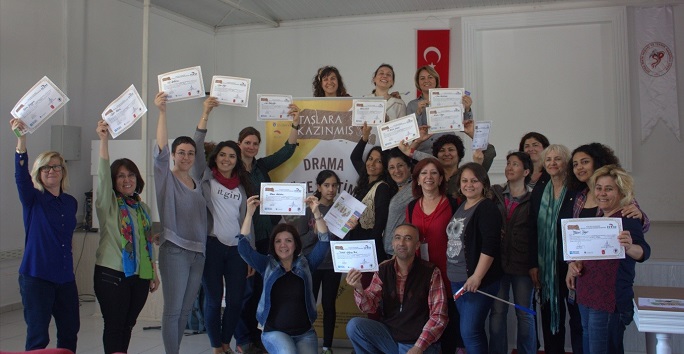Carved in Stone
Dr Alan Greaves worked with local partners across Turkey to deliver a programme of training and education that aims to reduce looting and vandalism of rock-carved inscriptions and monuments. The project has involved thousands of participants, recorded dozens of sites and resulted in the development of a new, lightweight approach to digital recording of rock carvings in the field.
The Challenge
How can support local communities in Turkey to protect vulnerable rock carvings at risk from destruction?
Ancient rock carvings can be found in nearly every village in Turkey, but natural erosion and human actions, such as vandalism, quarrying and building development, means they are at risk. Looting of these and other sites also funds terrorist groups such as ISIS but they cannot be removed to museums for safe-keeping. Their remote, inaccessible locations hamper recording with 3D laser scanning (3DL). Reflective Transformation Imaging (RTI) is a more lightweight recording method than 3DL, requires no expensive equipment, and works by using digital photos to compile an interactive digital image of an artefact.

RTI highlights fine surface details, making eroded or damged inscriptions easier to see, but it can be difficult to learn and tricky to use under field conditions.
Research Action
Building on an existing partnership with Fethiye Museum Dr Alan Greaves has developed a two-strand approach that combines training local heritage professionals in using RTI with educational resources for schools and community groups that raise awareness of looting, empowering local communities with awareness of their local archaeological heritage.
First, a series of awareness-raising workshops at universities and museums across Turkey introduced the heritage community to the potential of RTI as a powerful tool for archaeological research and conservation. Next, heritage professionals from universities, museums, research institutes, and commercial heritage consultants were trained in how to use Highlight RTI, in which high powered flash guns are used to compensate for the intense Mediterranean sunlight and make fine surface details visible. Finally, partners were offered support with using RTI for a year after the training as they started to record at-risk rock-cut monuments across Turkey, including sites along the Turkey/Syria border.
At the same time, a series of educational games were developed using the principle of Active Learning to embed awareness of heritage conservation. Active Learning encourages children to construct their own meanings for the learning activities resulting in deeper learning. The games were piloted with teachers, parents and school kids across the Fethiye region of south-west Turkey. Feedback from the pilot was positive and the games are now freely available online for use by schools, museums and tourists.
Working in Partnership
The Carved in Stone project was lead by Dr Alan Greaves for the University of Liverpool, with postdoctoral research Dr Sarah Duffy and technician JR Peterson.
Our project partners in Turkey were Hacettepe University Archaeology Department, who helped with hosting awareness-raising events and field trails; Mediterranean Civilisations Research Institute at Akdeniz University, who hosted RTI training at their Phalesis Research Centre; and FETAV, an educational and environmental NGO in Fethiye who developed and piloted our learning materials.
Further RTI training and awareness events were held across Turkey at Gaziantep University, the British Institute at Ankara, Koç University, Mimar Sinan University, Istanbul University, the Erimtan University in Ankara, and Fethiye Museum.
Outputs and Outcomes
Our RTI awareness-raising events were attended by 350 heritage professionals in eight different localities across Turkey. We then trained 51 archaeologists and conservators in RTI, working with real artifacts as our training examples, and using specially prepared bilingual training handbooks and sets of training data.
These are now freely available online, and are already being used in Turkey to train students in RTI. During the project 40 at-risk monuments were recorded across Turkey, including the Halep Yazit inscription which is carved into the bedrock near the Turkish/Syrian border in the Gaziantep province
Whilst supporting our colleagues in Turkey, we realised that they were encountering challenges with using RTI in the field because of the size of the monuments they wanted to record, their inaccessible locations, or extreme ambient sunlight. We therefore worked to develop an alternative method of capturing the digital images needed to make an RTI, using 3D models and Virtual Reality, an approach that we refer to as Virtual RTI (V-RTI). We then piloted this new recording method in field trails in the city of Fethiye (ancient Telmessos), where tombs of the ancient Lycian culture are at threat from vandalism and rapid urban development. A preliminary report on the Fethiye survey has been produced, and a final report has now been accepted for publication by The Journal of Field Archaeology.

Our education programme provided heritage training for 200 teachers and community volunteers who then engaged with an estimated 3,000 school kids within the first year of the project. The games that we have developed are now available to freely download and use and have been designed ot be easily reproductible using standard black-and-white photocopiers, to minimise costs for schools. An article about heritage education for community cohesion has been prepared for publication.

Download the Carved in Stone Evaluation Report
The training not only provided information about how to use the technology but also provided information on ways in which I can personally use it in my own projects